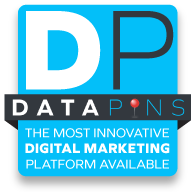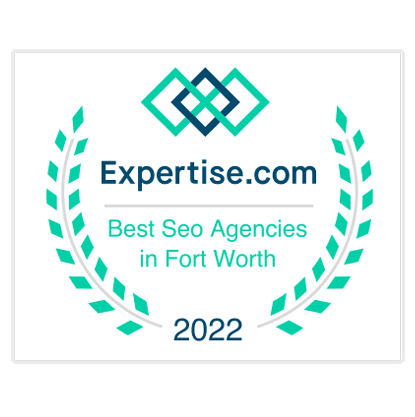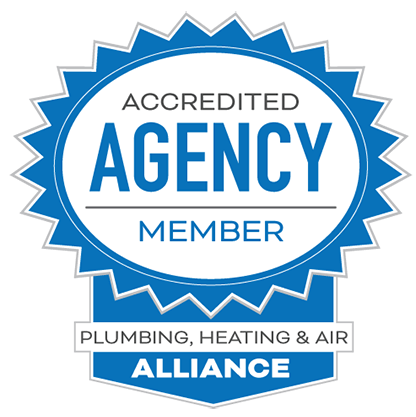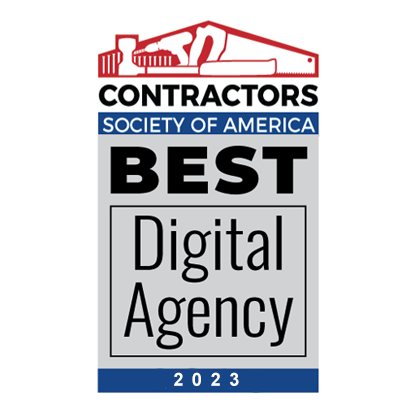What does it look like when a content writer plans out their newest website? Today, we’ll take a close look at their process as we interview Blair Fawcett, one of the skilled content writers at Plumbing Webmasters.
You can view the whole interview on YouTube, or explore our Content Marketing section for additional details about our services.
Table of Contents
Introductions With Blair Fawcett
Madison: Hey guys! Welcome back to the Plumbing Webmasters Podcast. I’m Madison. Today, we’re going to shake things up a little bit. We’re going to be talking about content creation, but from the perspective of one of our content writers. We have Blair Fawcett with us today. She is one of our spunky content writers here at the Webmasters. I’m going to be interviewing her, asking her some questions about her process.
Blair: Yes, indeed. Very spunky!
Madison: Let’s go ahead and jump right in. Blair, can you tell us a little bit about what led up to working with the Webmasters?
Blair: Absolutely. I have a degree in Creative Writing from the University of North Texas. After I graduated, I became a teacher for a few years in the public school system. After that, I decided I really wanted to focus on journaling, writing, becoming a journalist. That’s where I found the Webmasters.
Madison: Cool! You caught the bug and you’ve been writing since you’ve been in grade school? That’s awesome. A lot of our content writers start with one different degree – anthropology I think was Shabnam’s (one of our other writers) – and they end up in a few years writing as a career. But I think it’s cool to see somebody who’s been writing her entire adult life.
The Content Writer Planning Process
Keyword Research and Placement
Madison: Why don’t we go ahead and get started on your writing process? Before we start big though, let’s go on a smaller scale. Let’s take a single service page, say “Water Heater Installation” or something like that. How would you start planning that page and what’s your process for working that page?
Blair: I’m so glad you asked! I focus on two different parts of the question. One: How do I optimize the page for SEO? The other: How do I make it where it’s really easy for the customer to read?
The first thing that I do to make sure that I’m optimizing for SEO is that I make sure the word count is correct, that the headers are aligned with the subject matter. I make sure that there’s a call to action, there’s a linked phone number so the customer always has easy access to the company. They know what the company does, so they can say “Okay. Clearly this company does…” What did you say?
Madison: Water heater installation.
Blair: So if I’m the customer and I say “You know what? I need a new water heater.” This is the company that popped up and they popped up because I had my page SEO optimized. That’s great.
Madison: Okay, so you’ve clearly done your keyword research and made sure that’s ingrained into the page itself.
Blair: Keyword research is so crucial for this aspect.
Writing Content for People
Madison: Now you said you had a second goal, which was making for an easier reading experience. How are you going about that?
Blair: So I do this thing called “Kiss it. Don’t kill it.” K.I.S.S it means “Keep it short and sweet.” K.I.L.L. it means “Keep it long and lengthy”.
Madison: That’s cute. Kiss it; don’t kill it. Nice.
Blair: What I do there, I make sure it’s direct. It’s to the point, and I also make sure that the customer has access to what’s going on in that page, as opposed to it’s just long/length/tedious sentences that are missing the point.
Courting Customers and Converting Leads
Madison: That’s so important! A natural reading experience makes for great reading for the [consumer], but it also feeds back into the conversion process of actually turning a prospect into a sale, which is what our clients want. So what sort of stuff are you doing to create that natural experience and to maximize that conversion process?
Blair: I think perspective is so important. I imagine two things. I imagine that I am the customer who’s looking for service (like I mentioned earlier), and I also imagine that I’m the company. What is the message that I want to convey from the company? I do one thing that is really important: I do a logical, an ethical, and emotional appeal.
Let’s say that I have a burst pipe in my home. I’m the customer, and I want a service. I’m going to look for something that’s logical, that makes sense to me. “Yes, I need a plumbing repair right now.” Ethical: “Okay, this company is insured, they have the right certifications. Those are important from an ethical standpoint.” Then finally, we have the pathos, which is emotional. I’ve actually had a burst pipe in my home, and it was terrible! I really feel for the customer there.
Madison: That’s so cool! So you’ve been able to take a lot of your own experience (both as a teach and as a homeowner) and feed that back into your writing. That’s great. You mentioned different sorts of appeals you can make: the ethical, the emotional, and the logical. That’s really feeding back into that natural reading experience. So many plumbing websites are missing that. They focus on the sale, sale, sale. “This is why our services are great…” but they don’t relate it back to the customer.
Blending SEO With Natural Reading Experience
Madison: That’s something that many websites struggle with. How do you make sure that you have that balance with those SEO elements (and clearly displaying services) with that natural reading experience? Is that a struggle to balance those?
Blair: No! I actually have a really good team that works with me all the time. I have graphic designers that make sure the website layout is really clean, pristine, and nice. That all the buttons click where they’re supposed to go. Also, something that I personally do is make sure that all of the pictures that are associated with the services they match what exactly is going on in that page.
Here’s something that I love! Sometimes the companies will give us a whole bunch of pictures that we can work with.
Madison: Oh yes! Pictures are so nice when [clients] actually give them to us. We sometimes have to work with stock photos. We definitely don’t want to if we can avoid it. It’s okay, but if we can get those original photos…that’s fantastic.
Blair: It is. It’s authentic!
Non-Text Elements Crucial to Content Writers
Madison: Now, taking a tangent off that, you’ve mentioned that this is just one of many non-text elements. What other sort of non-text elements really feed into your process that are really important for the page?
Blair: Something that we do is incorporate Righteous Reviews…for the customers to have easy access to the reviews and then also have access to the services themselves. We have a really clean look. We really work with our [clients] to make sure that their plumbing website looks exactly the way they want their plumbing website to look like. We personalize it. We make it really stand out as a beacon of what that company’s message is and what they’re about.
Madison: Now is that from a graphical standpoint, or formatting? What sort of styling are you thinking of?
Blair: From my end as a content writer…I do a lot of research into the company. I see what they’re about. I see how long they’ve been around. Every single company is different. Whenever I work with a company, I make sure to incorporate those individual characteristics (those little details) are worked into the page as much as I can, while also continuing to have it SEO optimized and have all the easy reading.
TLDR, a Challenge for Content Writers
Madison: Speaking of reading, there’s a challenge that many content writers and businesses in general face today. There’s a saying that you’ll see on the internet:TLDR which stands for “Too Long; Didn’t Read.”
Blair: Ah! What a travesty!
Madison: So many people are crunched for time. Maybe they’re browsing for services while they’re at work or they’re at their pilates class, and they need to find information quickly. How do you deal with this challenge in a way that ensures that people actually get to the content that you want them to?
Blair: Madison! You’ve actually hit the heart of the issue. The best way to address that is to make sure that it is a pleasant reading experience. I never want my customers to feel like “Wow. I’ve gotten sold to.” I want them to feel like “Oh. This is informative. It’s telling me about this company. It’s telling me about the service.” That’s what a good website will do. That is what a good message will do.
Madison: Mmhmm. I think a lot of great websites, when you’re reading them it feels almost like a conversation that you’re having with a person, not somebody telling you “Okay, this is how X, Y, and Z goes.” It’s such a relatable experience, that it feels like you’re talking with a person.
Key Takeaways for Great Reading
Madison: What do you think are the most important elements in your content writing that are providing a great user experience for somebody that’s visiting the site (maybe for the first time)? They need services and they’re trying to get information.
Blair: I put in some imagery. I put in some metaphors; I put in some details…
Madison: There’s that creative writing for you!
Blair: Ya! Exactly…describe a burst pipe. “Ah! A burst pipe is in your home and that’s terrible.” That way everybody feels emotionally invested in the process.
Madison: So you’re scene setting?
Blair: Exactly. Scene setting; getting some imagery in there. Everyone likes a good metaphor.
Madison: So many plumbing websites when you read through them, they’re just so dry. I’m like “Ya, I know what plumbing is, but this doesn’t really relate to me.” But the way you’re describing it like a person can see the situation going on in the page. That’s really cool!
A Broader Point of View
Madison: Let’s blow up this perspective and look at it from a whole, cross-site view. How are you going to make sure, as a whole, that your content across the entire website is successful (cohesive, informative, not overlapping)? What are you going to do to try and ensure that?
Blair: Whenever you’re managing a really big website, you’ve got a lot of pages. You’ve got 60 pages that you’ve gotta make sure have a really similar message. That it all works together. To that end, on the front end [it’s about] all the research you do on the front end from the very get go. You’re going to reap the benefits of that as you go through the website and create the content.
Madison: That’s a good point. So you know ahead of time what all the services are so you’re not accidentally overlapping on content. And what else are you doing?
Clear Messaging in Website Content
Blair: Something else that I’m doing is that I’m making sure to review and convey the company’s message in a succinct way. Again, I’m making sure that… “You know what? This company really advertises trenchless plumbing repairs. Let’s make sure that message is clear, and let’s hyperlink back to it.” Because if there’s a related service, let’s hop back there. Let’s make it really easy for the customer to have access to these different pages in this big website. It’s a great undertaking to create a website, and with that comes a lot of responsibility.
Madison: Oh ya! I know from experience that process can take weeks to go through, maybe even a month depending on the size of the site. A lot of formatting, a lot of navigational structure is going in. The graphic design team is helping with that, and of course we have people like Amberlynn [our top editor] who are going in and editing it and making sure the message is consistent. There’s so much going in.
Key Takeaways for Plumbers
Madison: Now Blair. Let’s say that up to this point nobody was listening whatsoever. What would you say to plumbers if you had one thing you wanted them to take away from our discussion? What advice would you give to them?
Blair: I would say “Hi! How are you?” Dear plumbing friends, a well-designed website can work wonders for your company’s image. A really good website can tell the customers who you are in a clear way. Your website is your first point of contact with a lot of your new customers, and some of your old customers. By getting a good website, you’re putting a good foot forward on the internet and in real life.
Madison: And you’re balancing that SEO with natural reading experience so that people can not only find you, but choose you as well. Thanks for coming in, Blair. We’ll see what we’re gonna talk about next time. In the meantime, thank you so much for listening in plumbers. We’ll see you next time.
Blair: Thank you!






